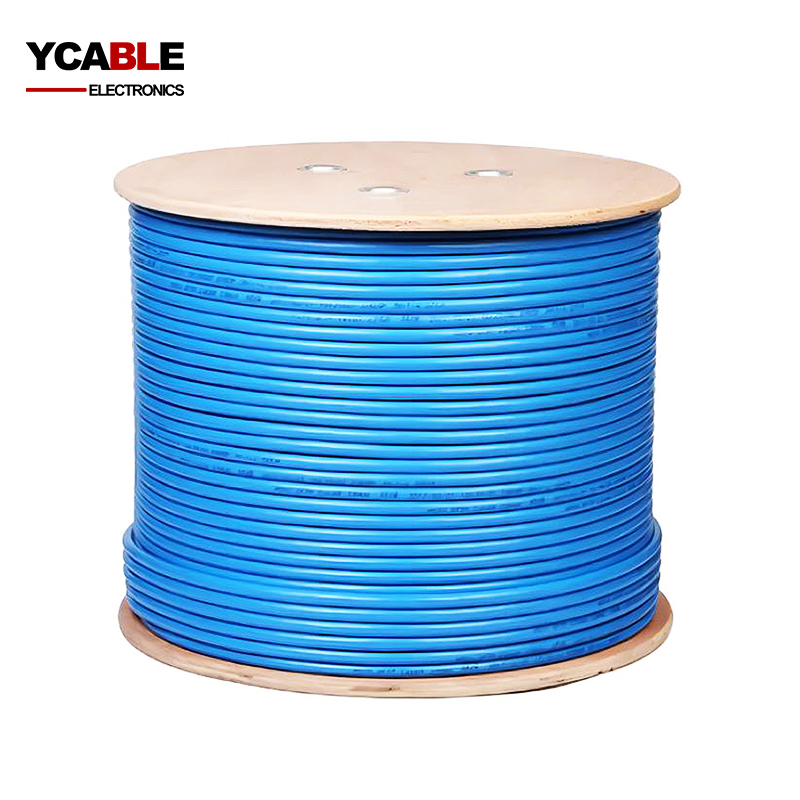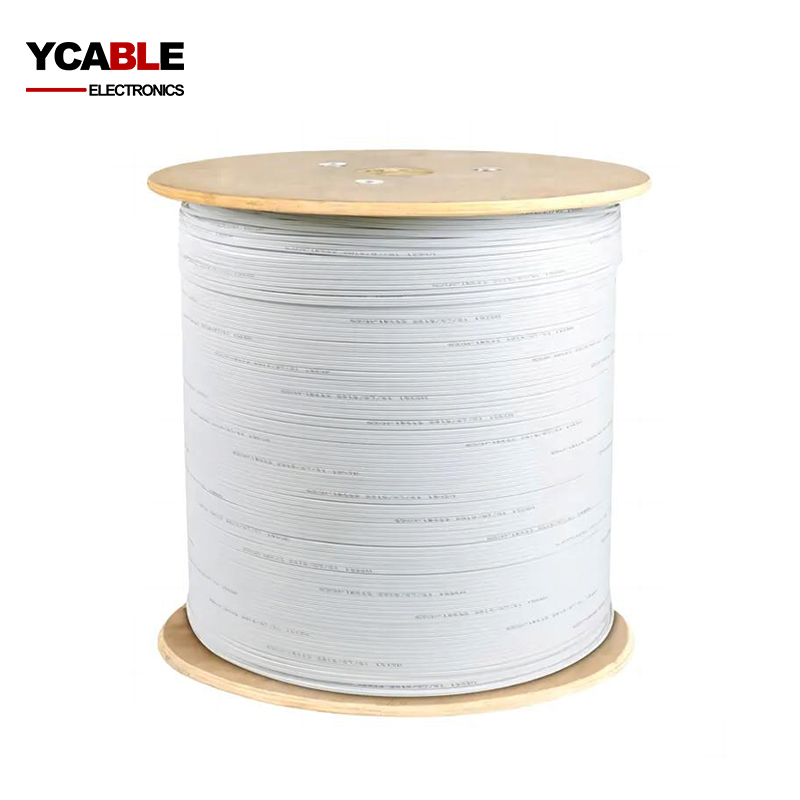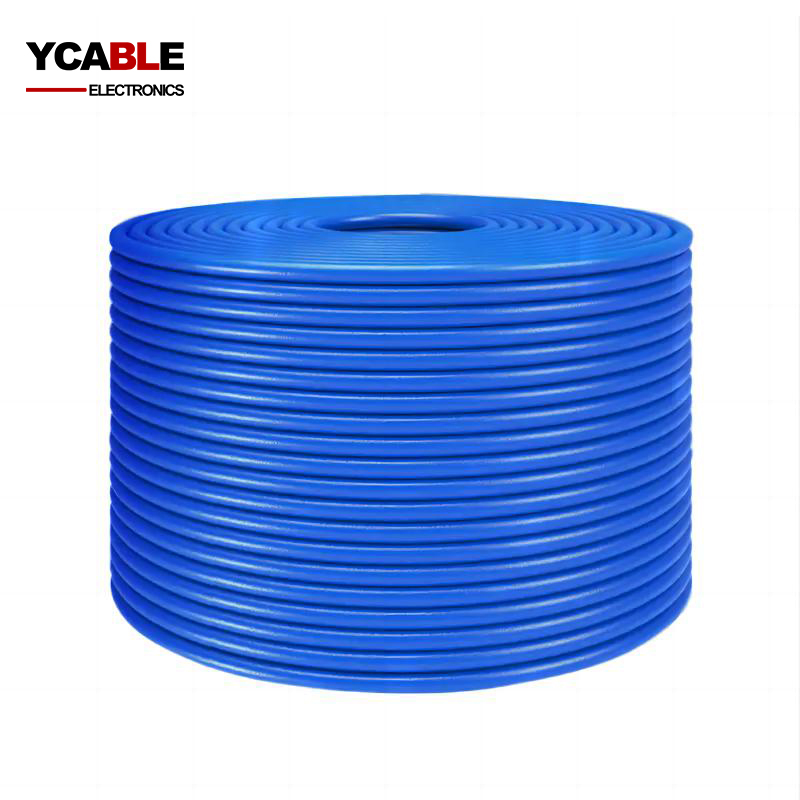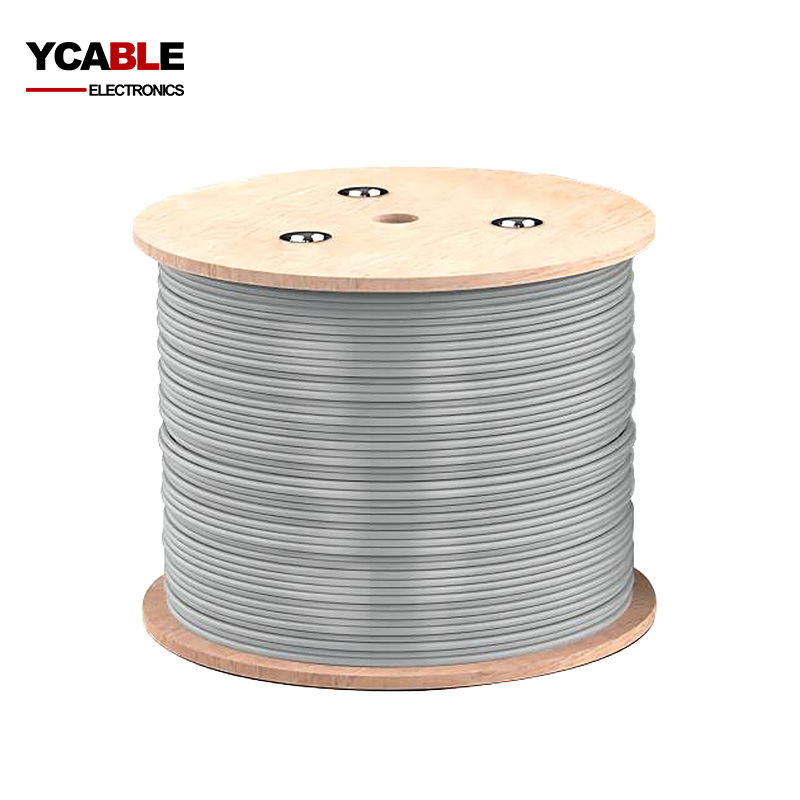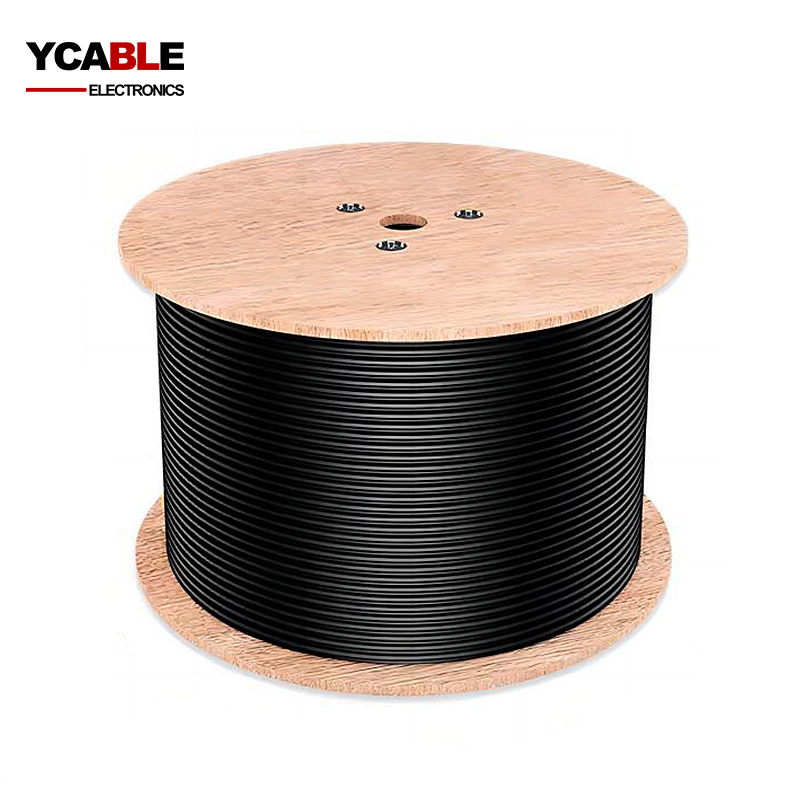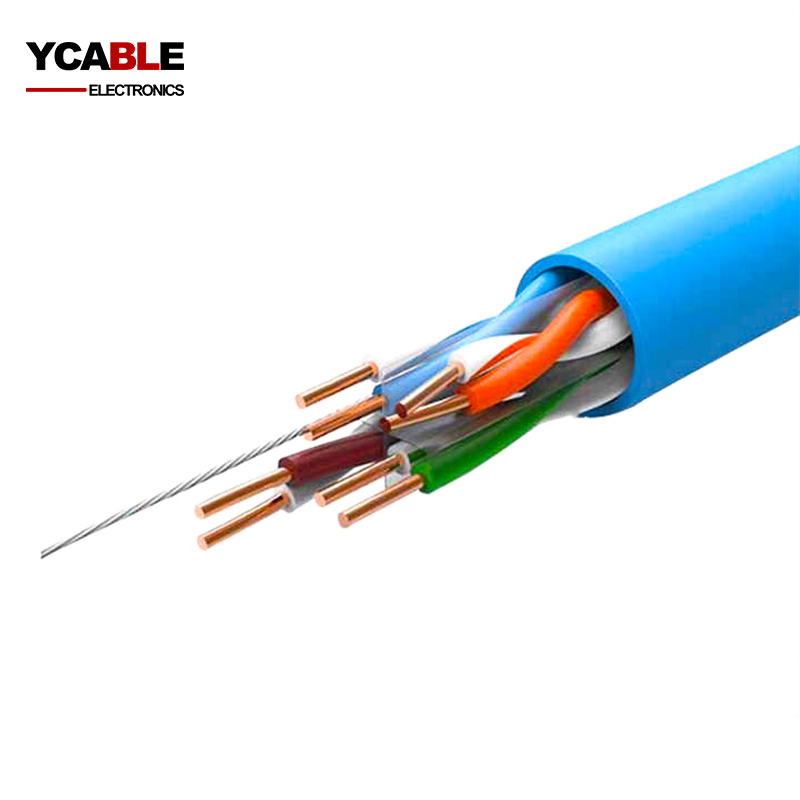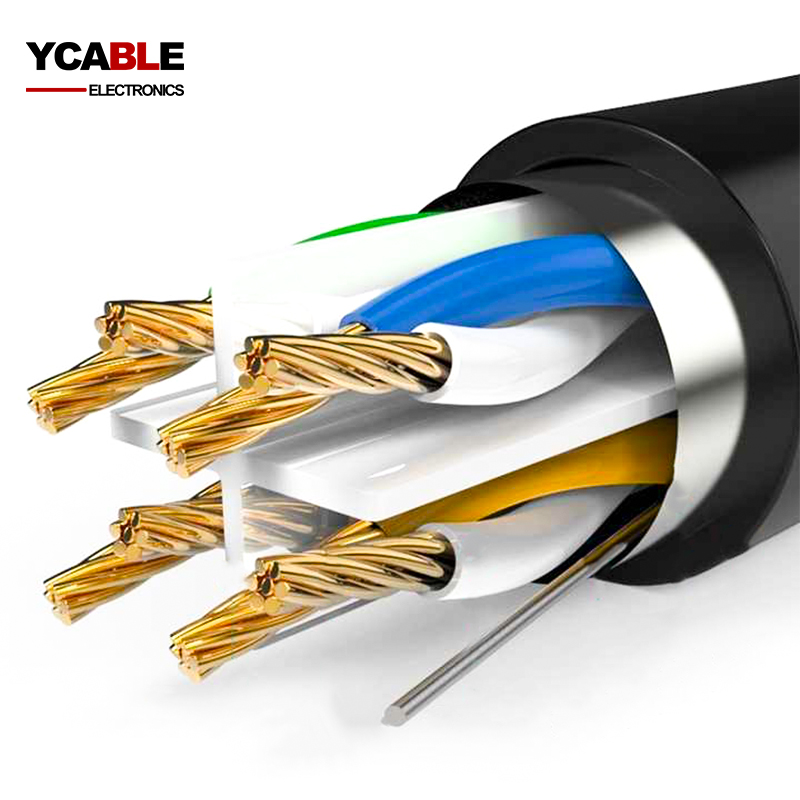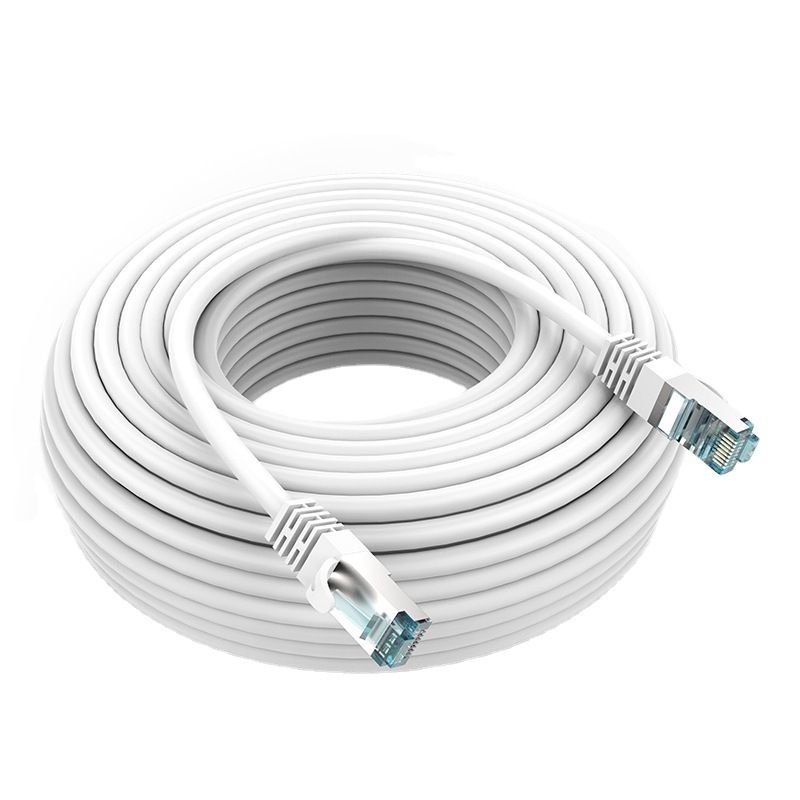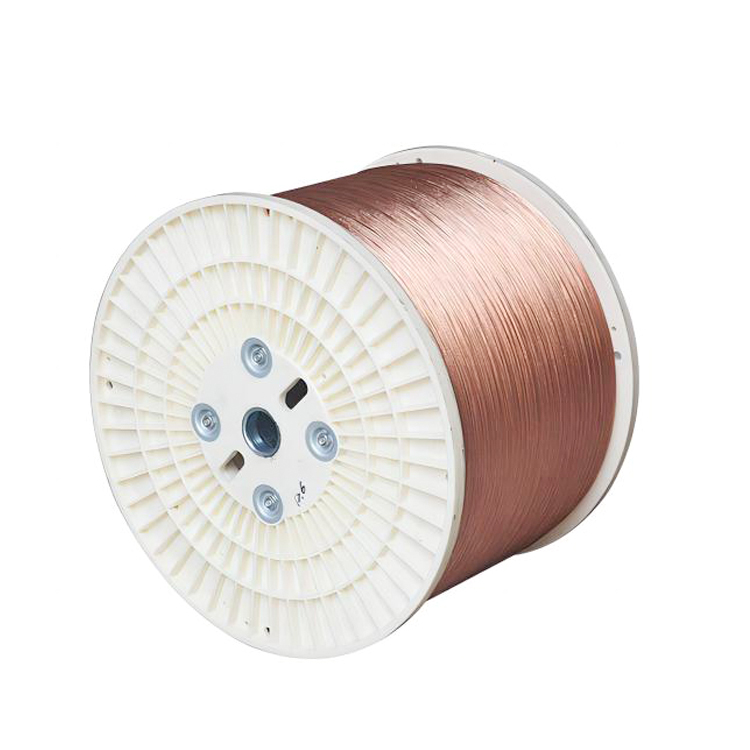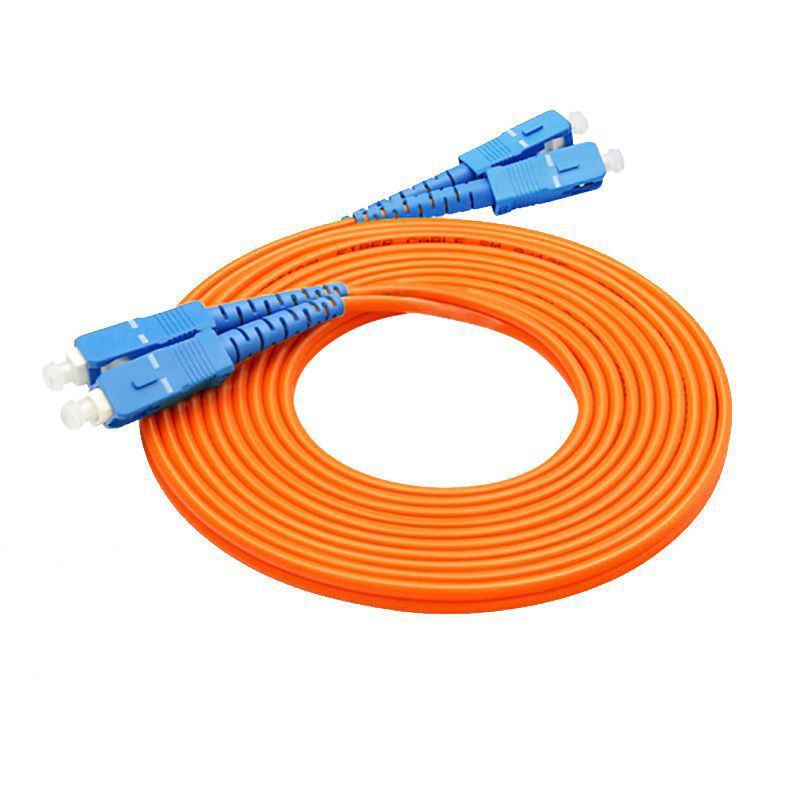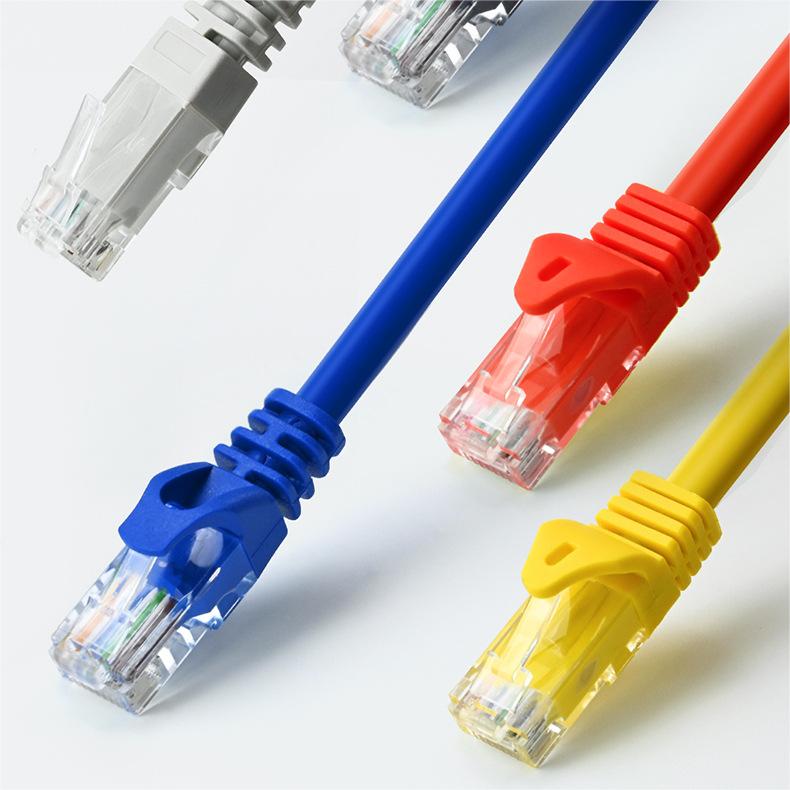CCA Ethernet Cable UTP CAT5E
CCA Ethernet Cable UTP CAT5E
Item Number:CCA Cat5e UTP
- Model: CCA Ethernet Cable UTP CAT5E
- Size: 24AWG Soild(0.46mm-0.51mm)/Stranded
- Color: White/Blue/Black/Gray/Custom
- Insulation: PE/LSZH/Teflon
- Shield: Unshielded
- Jacket: PVC/FR-PVC/LSOH/Custom
- Packing: 30.5M(100FT), 305M(1000FT)/CTN/Custom
- OD: 5.2mm/Custom
- Conductor Material: CCA, Copper Clad Aluminum
- Drain wire: None
Environmental Specifications:
Environmental Space – Non-plenum
Flame Test Method – CMR
Installation Temperature – 0 °C to +60 °C (+32 °F to +140 °F)
Operating Temperature – -20 °C to +60 °C (-4 °F to +140 °F)
General Specifications:
Cable Type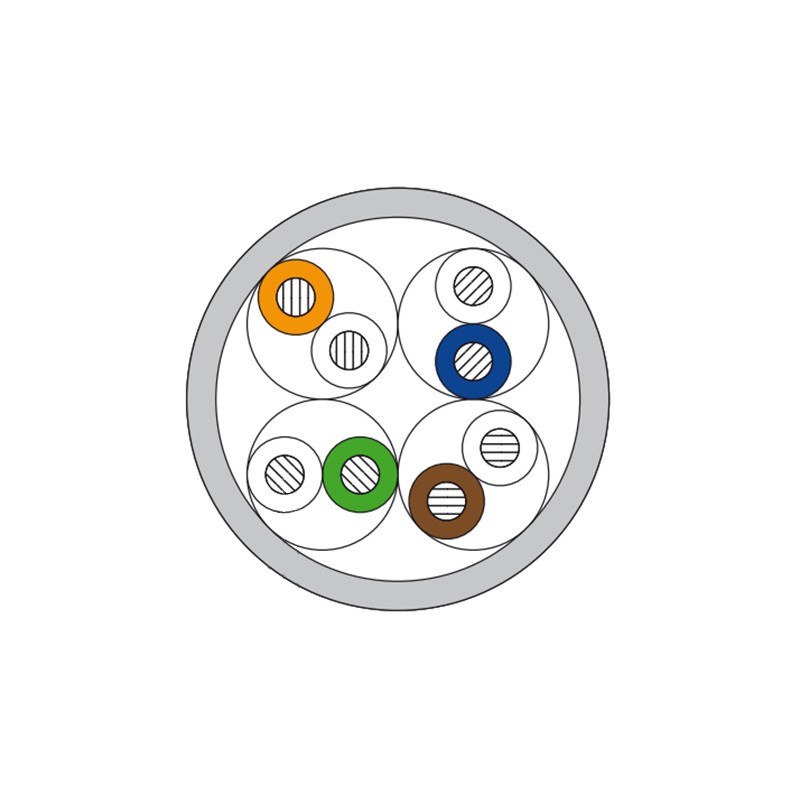
U/UTP (unshielded)
Pairs, quantity
4
Cable Component Type
Horizontal
Conductor Gauge, singles
24AWG
Conductor Type, singles
Solid
Characteristics:
- The transmission speed is very fast. Compared to other types of network cables, the transmission speed of the Super Five network cables will be faster, reaching 10 Mbps.
- The manufacturing process is also very good, which can effectively reduce signal interference. Moreover, they are all made of copper wires twisted together, so the electrical conductivity is very good.
- There are many brands sold on the market, so everyone must choose a large brand to ensure the quality of the network cable.
- Suitable for indoor applications
In general, the network cable CCA CAT5E has several advantages, such as well overall performance, high-cost performance, and relatively low difficulty in construction and maintenance. Choosing it will not disappoint you.
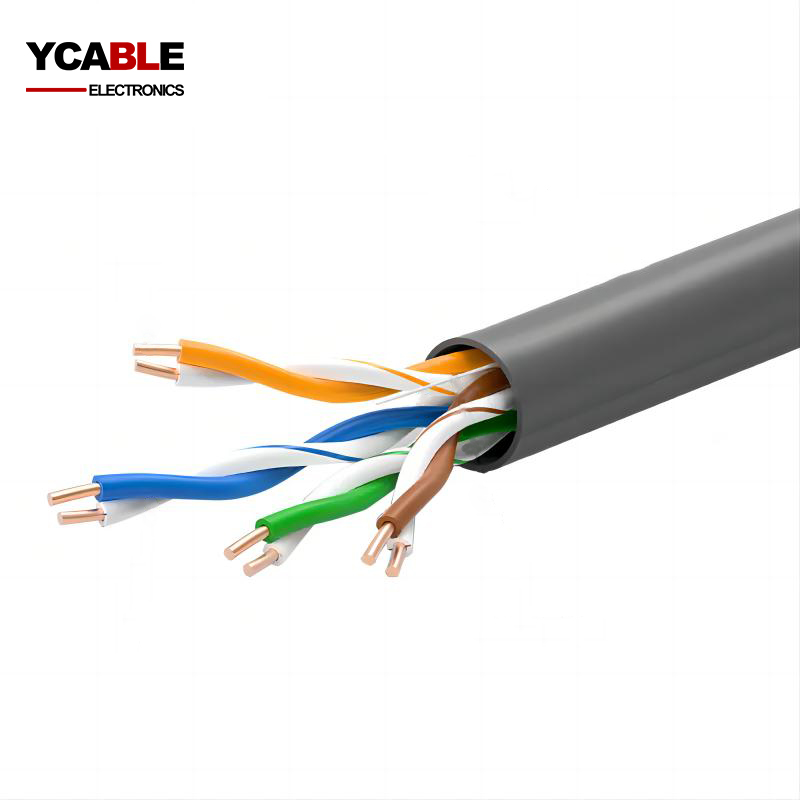
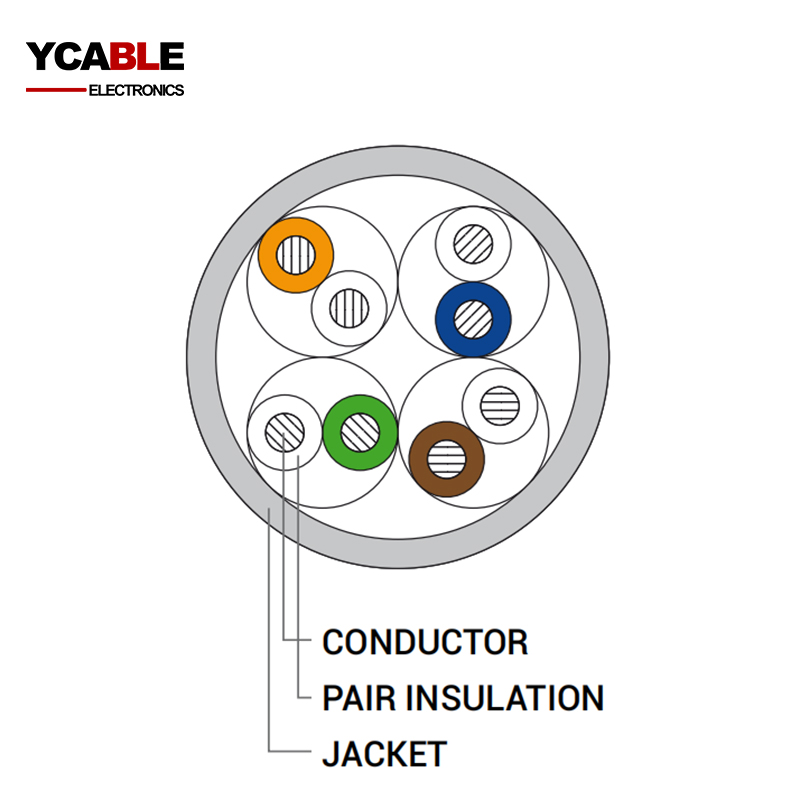
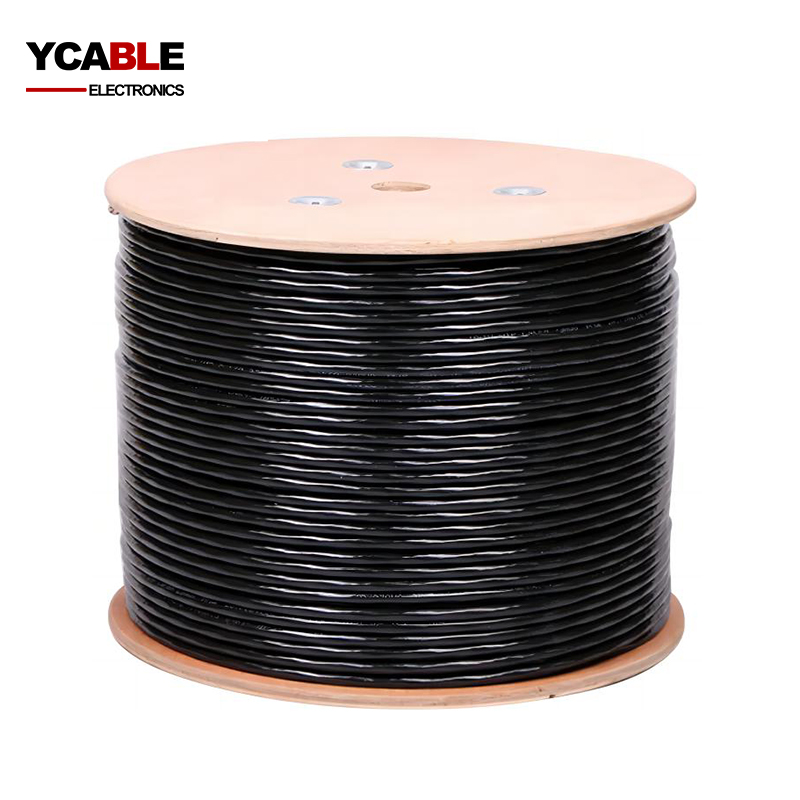



Categories
CCA Ethernet Cable UTP CAT5E
| Electrical Specifications | |
| ANSI/TIA Category | 5e |
| dc Resistance Unbalance, maximum | 5 % |
| dc Resistance, maximum | 9.38 ohms/100 m |
| Mutual Capacitance | 5.6 nF/100 m @ 1 kHz |
| Nominal Velocity of Propagation (NVP) | 69 % |
| Operating Frequency, maximum | 200 MHz |
| Operating Voltage, maximum | 80 V |
| Transmission Standards | ANSI/TIA-568-C.2 CENELEC EN 50288-3-1 ISO/IEC 11801 Class D |
| Dielectric Strength, minimum | 1500 Vac 2500 Vdc |
Description
What is CCA ethernet cable UTP CAT5E?
In the ever-twisting tale of ethernet cable commerce, where the vaults of these digital serpents are burgeoning anew, we spy through a kaleidoscope foreseeing a fantastical 3X or even 4X upsurge in the market value for bulk solid copper ethernet marvels. To the guild of electronics enthusiasts and wizards of high-velocity network cabling, the realm of CCA ethernet cable, CCA cat5e cable, and CCA cat5 cable may seem like uncharted waters. Yet, for those intrigued by the mystique of CCA's virtues and vices, our chronicle unfolds further.
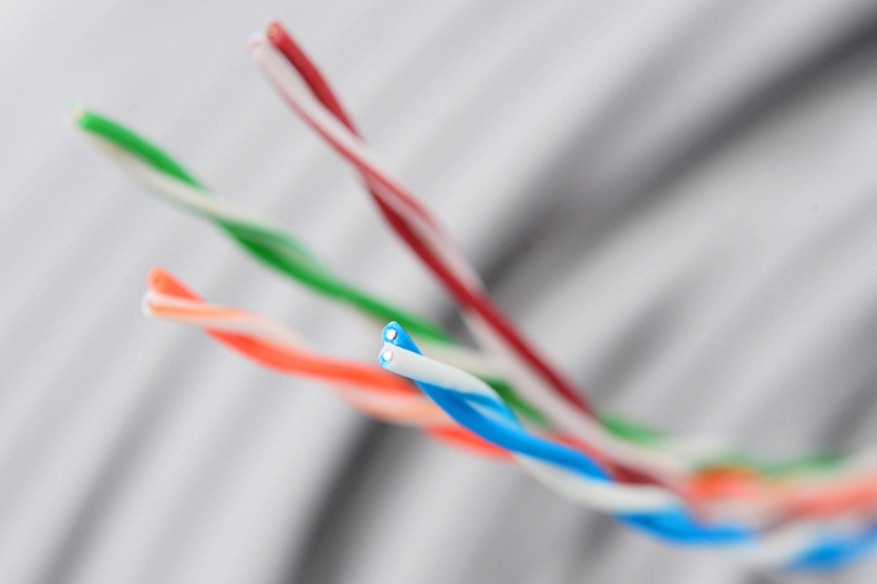
But who, you might ponder, are the chosen ones for the CCA ethernet cable's embrace?
Let's venture into the labyrinth of the Mineral Commodity Summaries 2021 by the U.S. Geological Survey, revealing that a lion's share of 43% of the States' copper consumption fuels the behemoths of building and construction, surpassing the amalgam of electrical gadgets (21%) and transportation titans (19%).
This revelation hints that a significant chunk of American copper feasts on powering electric currents and network whispers. Perhaps, in curtailing our copper cravings and lessening the overall hunger, we might tame the rising tide of copper's golden ransom.
Behold, CCA—Copper Coated Aluminum. Envision a core of aluminum, gallantly donning a copper mantle, all nestled under the cloak of plastic insulation. The CCA ethernet cable, a blend of economy and functionality, emerges as a contender.
Yet, traverse cautiously, for the path of CCA ethernet and cat5 cables is fraught with perils. Still, for the shrewd installer, these wires, at mere fractions of copper's kingly sum, could carve a safe passage. As an edict from our digital tome, the CCA cat5e and cat5 cables emerge as wise choices in realms of modest signal realms, conservative power consumption, and odysseys spanning from medium to long distances – think indoor sentinels (security alarms), silent guardians (door/window sensors), and low-velocity data streams.
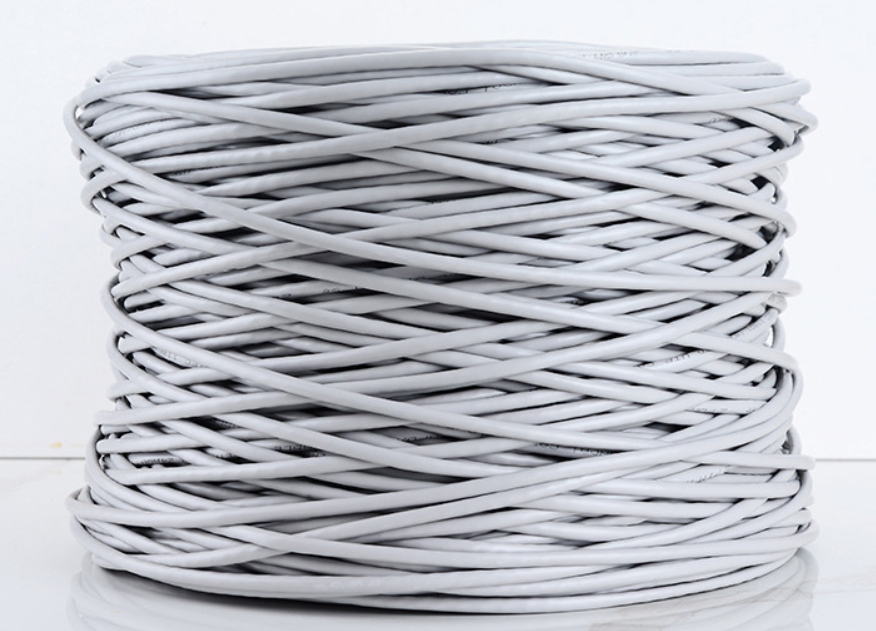
Now, where do CCA cables falter?
Avoid them for tight-knit termination quests.
Our previous digital narrative, 'Solid vs Stranded: The Duel and the Verdict,' revealed that stranded cables are the acrobats of the cable circus, bending in ways solids dare not. Alas, such agility eludes CCA's grasp.
Shun them for high-fidelity signal crusades.
Advancing further, solid CCA cables, bound by aluminum's unyielding nature, are less pliant than their copper cousins. Less conductive, they risk misplacing whispers of data, rendering them unsuitable for missions demanding unblemished signal purity.
Forsake them for quests thirsting for power.
In the world of CCA, greater resistance beckons a forge-like heat as power surges through. This fiery temperament is why high voltage or high wattage PoE adventures are no playground for CCA.
Exclude them from endeavors under NEC's watchful eyes.
The sages at the Communications Cable and Connectivity Association, stewards of cable lore, decree that CCA lacks the National Electrical Code's blessings, forbidding its use in sanctuaries demanding CM, CMG, CMX, CMR, or CMP ratings.
As our technological behemoths grow hungrier for power and swifter data streams, the lands where CCA cables thrive shrink. Yet, as copper's price soars to the heavens, it beckons us to abandon the universal copper creed and scout for niches where CCA ethernet, cat5e, and cat5 cables could serve as cost-effective amulets.

